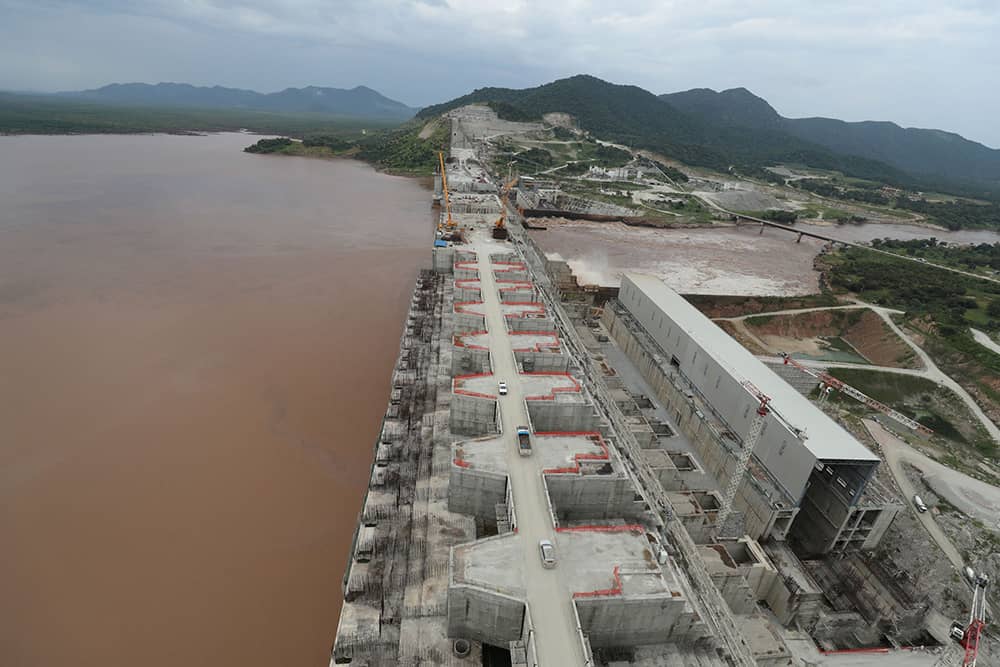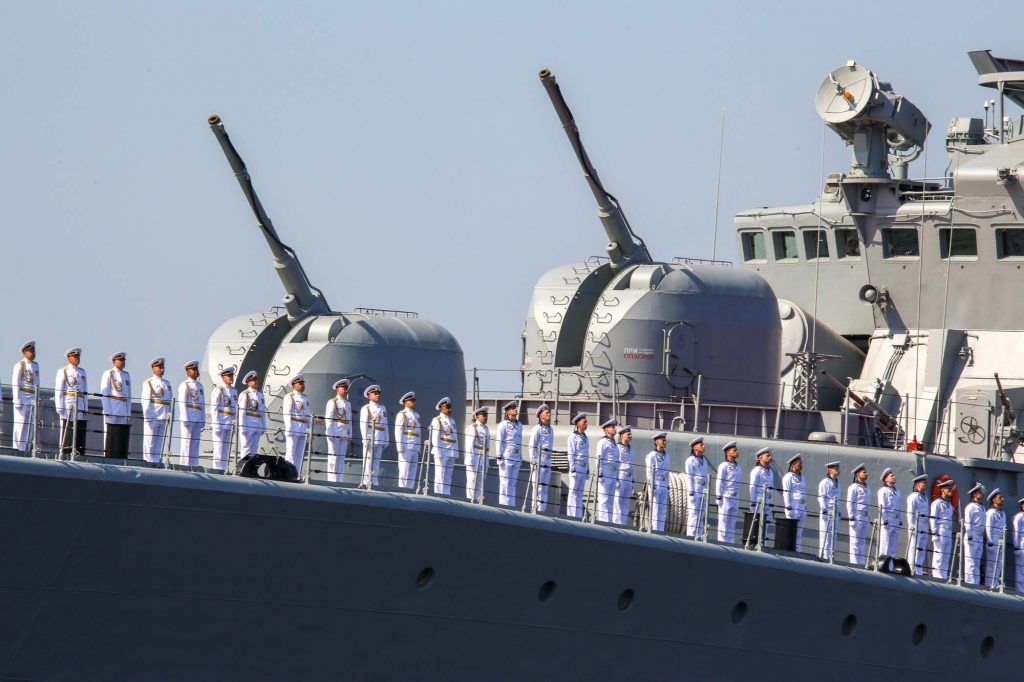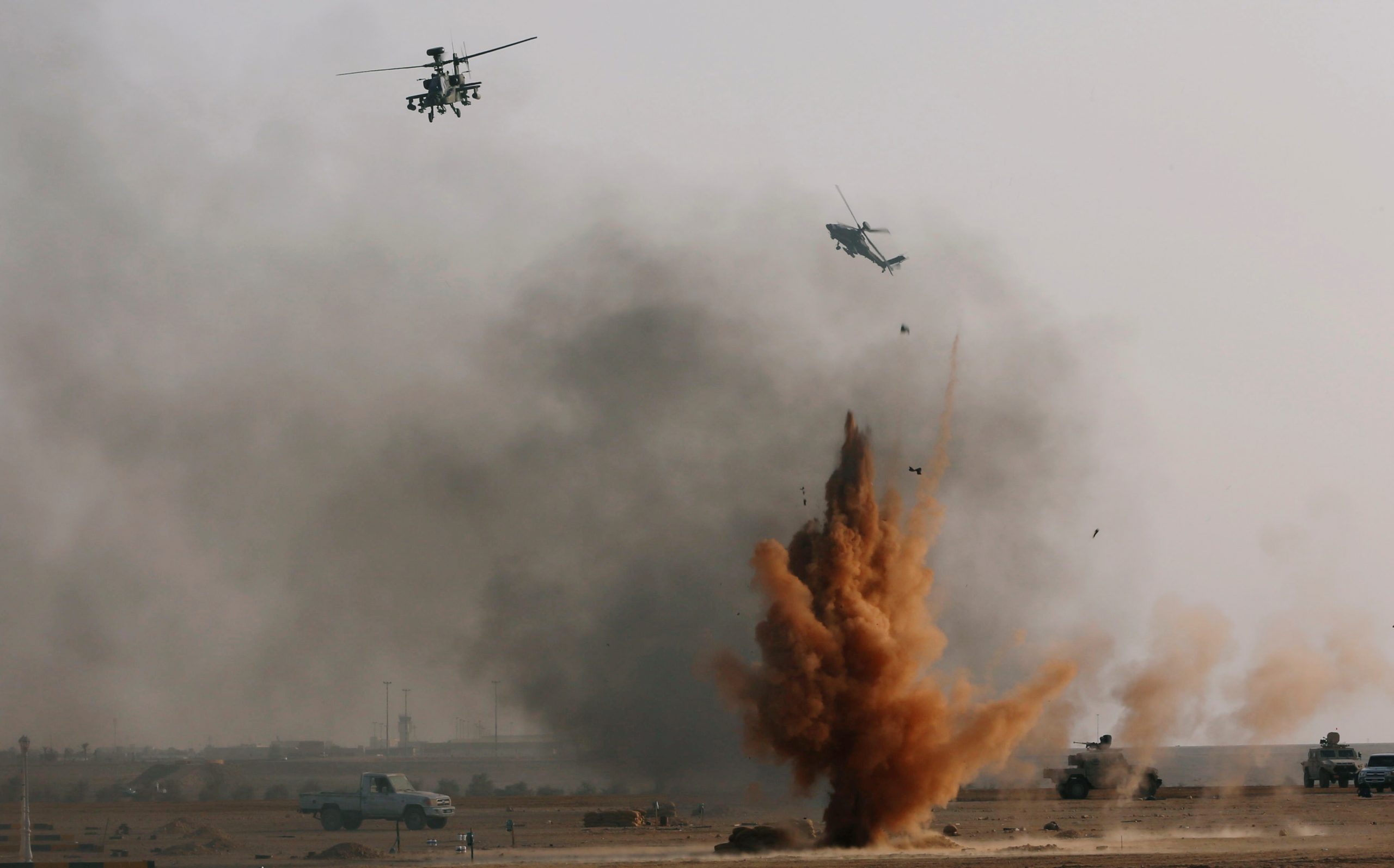The biblical account of human history starkly documents fratricide at the very beginning—Cain kills Abel. Personal violence and collective warfare are omnipresent in its tales, reflecting the dark side of humanity. Yet recent decades have produced an impressive body of literature and of ambitious political promises, all too willing to read Isaiah’s description of the end of days, “they shall beat their swords into plowshares,” as a parable about the demise of war in contemporary society. These studies claim that the use of force has become less attractive, particularly for industrialized and/or democratic states because of a variety of moral, social, and economic reasons. It is argued that the costs and risks of the use of military force are rising, while its benefits are shrinking. The notion that war is less frequent and fashionable has been broadcast widely in the mainstream Western media.
Even if we ignore the methodological problems in measuring the incidence of war, we can concede that large-scale wars, those between great powers, seem indeed to be—at least for the time being—in decline. About two billion people on earth, however, still live in zones of armed conflict. According to Severine Auteserre’s calculation in The Frontiers of Peace, published this year, wars or the preparation thereof have cost the world in the last five years about 13% of the global GDP. Such figures should temper the optimism about the alleged progress in the quality of interactions among political actors in the international arena. Wars of various degrees of intensity will continue to be a feature of world politics.
This essay discusses several aspects of contemporary life, indicating that the use of force remains a relevant policy choice for statecraft: a frame of mind as necessary for liberal political leaders as it is for more conservative or authoritarian souls.
The International System
The basic nature of the international system has remained unchanged, despite attempts to establish a “rules-based order.” It is anarchic. There is no international authority capable of defending states from foreign aggression. Revisionist powers can still revert to military force to attain national goals. National security still involves complex efforts to build the military capability to defend the state. While borders have remained relatively stable in the last half-century, we have nevertheless seen the birth of new states and the re-acquisition of old territories, through war or the unilateral use of force. Moreover, the final arbiter in international disputes is still the power differential between the protagonists, and when very important issues are at stake, it is brute military force.
The attempts to mitigate the consequences of the anarchic nature of the international arena have produced international institutions that try to regulate international relations and set norms of behavior. But these do not constitute a world government, and no such prospect is within sight. In contrast with states, whose role it is to enforce their laws within their territory by organs of force, there is no “global police” (and those who have aspired to that role do not do so anymore—as related elsewhere in this issue). In fact, carrying out the injunctions and the decisions of the international bodies and treaties is left to the discretion of individual political actors. If determined or strong enough they get away with breaking the rules.
Thus, Iran disregarded UN Security Council resolutions regarding its military nuclear project, while China rejected the Hague international tribune’s ruling in favor of the Philippines on a territorial dispute in South China Sea. Russia’s high-handed actions in the Crimea and Eastern Ukraine may have created irreversible realities. The impotence of international institutions has been demonstrated by their total disregard of the great human tragedies happening before us, such as the League of Nations failure to prevent World War II, and the UN impotence in the face of the murderous civil war in Syria or the mass persecution of the Uyghurs in China.
Scarcity of Resources
Another systemic feature is scarcity of resources, which could still lead to violent competition even in an era of presumed plenty. Territorial aggrandizement in order to gain control over desirable commodities is, in most cases, increasingly costly, particularly since the alternative of economic takeovers makes physical occupation superfluous; yet certain goods are not easily replaceable. Access to water, for example, has been a source of tension and a cause for war. The attempt to divert the Jordan river flowing into Israel was one of the factors leading to the 1967 War. Egypt is signaling its determination to employ its military, if Ethiopia fills up its Grand Renaissance Dam on the Nile without considering the concerns of the riparian states. True, water can be procured by desalinization and conservation, and serve as a tool of diplomacy (as in the case of Israel and Jordan since 1994), but a challenge as dramatic as that posed to Egypt, whose very existence has always been intertwined with the Nile, cannot be easily resolved.

Ethiopia’s Grand Renaissance Dam is seen as it undergoes construction work on the river Nile. Photo credit: REUTERS/Tiksa Negeri
Additionally, securing foreign aid for meeting the food demands for its growing population has been a main thrust of Egypt’s foreign policy. Difficulties in acquiring enough funds to pay for the subsidized food bills of Egypt’s 100 million residents could increase the temptation to conquer or control neighboring Libya, a sparsely populated country with many oil wells. This was the rationale of Saddam Hussein in invading Kuwait in 1990—and he almost got away with it. The current civil war in Libya already provided an excuse for the threat of an Egyptian military intervention that might acquire permanency. China is also lacking adequate arable land and water resources. Its aggressive behavior in the South China Sea could be channeled in other directions to alleviate shortage in arable land and water. Global warming, generating droughts, could become a threat multiplier for conflict over land use and food production. One third of the African population lives in drought-prone agrarian countries and almost all sub-Saharan countries are likely to suffer water-stress. Famine is a strong incentive for taking radical measures. Hungry people are ready to kill for food.
Another issue adding to the potential for increased violence, albeit hardly or rarely mentioned, is the greater opportunity for offspring selection (female infanticide or sex-selective abortions). In countries such as India and China, the most populous states in the world, this option has resulted in an excess proportion of young men. The cultural preference for male babies has created a shortage of eligible women for marriage (various estimations point to over 100 million missing females in Asia) with a potential for internal and external violence. A need for captive labor and wives helped drive Viking expansion in the 8th century. In medieval Portugal, a surplus of young males led to territorial expansion in the north of the African coast. Sociological studies clearly indicate that unmarried young men are more violent-prone, and ready fodder for mass mobilization.
The Role of Technology
Technology affects the incidence of war. Improvements in defensive technologies make invasions more difficult and costly, reducing their chances of success. In contrast, upgraded military technology that enhances offensive capabilities provides incentives to recur to the use of force—using stand-off capabilities—for settling a dispute.
It takes time to understand the battlefield implications of a new technological breakthrough and its potential synergies with other weapon systems. Much is determined also by how it is integrated doctrinally in the training of military formations. The tank appeared on the battlefield at the end of WWI, but only during WWII did the Blitzkrieg doctrine capitalize on the tank’s potential as the key to swift maneuver warfare.
Moreover, the fluctuations in military technology favoring offense or defense are always temporary. The protected castles eventually surrendered to the gunpowder of artillery pieces, while the protective envelope of machine guns and barbed wire was easily penetrated by massed armored formations. Surface-to air missiles (SAM) were perceived to put an end to airpower, only to see in 1982 the Israeli air force decimating a Syrian Russian-made SAM system (Operation Mole Cricket 19). Today there is competition between stealth and sensors that identify attackers.
The recent advances in military technology amount to acquiring targets at increased distances and with much greater accuracy. The payload on launching systems has also grown. All these characteristics made war more lethal. Historically, the lethality of wars has increased. Many have suggested that increased lethality and increased participation of masses in the political process might discourage political leaders and public opinion from waging war. Clear evidence on such a trajectory in modern times is not (yet) available. In any case, even democracies tolerate great losses if the goals of a military campaign are deemed sufficiently important for the nation and if success is likely. Only when victory became elusive, and the moral case for the war eroded, did the US begin considering withdrawal from Iraq and Afghanistan.
While war can be much more destructive than in the past, warfare tends to be more discriminate. More precise munitions have the potential to limit collateral damage. The increased use of remote operated weapon systems lowers the number of casualties. These technological trends, paradoxically, make war— or limited military campaigns—more palatable. A reinforcing phenomenon is the significant decline in battle deaths due to protective equipment and progress in military medicine. Improvements in medical services on the battle ground, such as preventive care of soldiers, better equipment, and evacuation procedures, have reduced battle deaths.
Advanced technology requires a different type of personnel. Conscripts are usually less suitable for operating advanced technology. The need for technological skills and longer training for operating new weapons systems pushes militaries away from general conscription. It forces the military to compete in the market and build an all-volunteer force. One implication is that politicians have less constraints in employing such a military, whose members get paid for performing risky tasks.

The spread of technology facilitates the indigenous production of many types of weapons; nevertheless, high-tech weaponry is still expensive. Therefore, its possession is widening the power differential between rich, technologically advanced states and those with no means to procure the newest gadget. Superior military capability could tempt a state to exploit its advantage. Indeed, as already mentioned, Russia took Crimea in 2014 and carved a zone of influence in Eastern Ukraine. Baltic states, which have a significant Russian-speaking minority population, could be next in line. France decided to intervene militarily in Mali to support a friendly regime against a radical Islamist insurgency. The US might decide to emulate the 1915 John J. Pershing raids into Mexico if its neighbor becomes a failed state, run by the cartels. Yet, a high-tech military is not assured of decisive victory. The resolve and the interest balance could favor a weak opponent that recurs to an attrition strategy. Many weaker and persistent sides turned the superior military power of the stronger side irrelevant to the outcome of the confrontation. As history has shown, the US left Vietnam and Afghanistan defeated. Even the ruthless Russians withdrew eventually from Afghanistan. Moreover, low-tech weapons are often effective in attaining political goals. A simple Qassam rocket with a five kilometers range costing no more than $100 served Hamas to terrorize Israeli citizens living next to Gaza. It signaled the perpetuation of conflict against the strongest army in the Middle East—a powerful political message. Similarly, Sunni opponents to the American presence in Iraq employed effectively cheap improvised explosive devices (IEDs) to harass American troops and publicize their struggle.
The Nuclear Dimension
After Hiroshima and Nagasaki, it took some time to understand that there is a qualitative difference between nuclear weapons and other types of armaments. Fortunately, the nuclear taboo that emerged as the images of the two cities were manifested, has yet to be crossed; but this, in turn, has led to the misconception that nuclear proliferation actually creates mutual deterrence and stability, by freezing conflicts in the shadow of a MAD (mutual assured destruction). In fact, providing effective deterrence against a nuclear exchange is much more complicated than most academic analyses suggest, and nuclear weapons clearly do not provide deterrence at all levels. Two nuclear powers, India and Pakistan, have already fought a limited conventional war in the Kargil district in Kashmir (1999). Non-nuclear Iran did not hesitate to attack US naval ships by proxies near Bab-el-Mandeb.
Yet, a nuclear arsenal has deterrence value. This is why nuclear states maintain and upgrade this type of weaponry. Moreover, it has domestic and external political uses. Attaining a nuclear status will entrench the Ayatollahs’ regime in Iran. Moreover, it would instill fear among its neighbors who are not convinced that the rulers in Tehran have internalized the taboo against the use of nuclear weapons. A nuclear alert, such as the one called by the US in 1973 (which at the time signaled great determination and prevented further Soviet military involvement in the October War) may not quite work the same way next time. Some accounts suggest that Israel’s nuclear image was a factor in Arab recognition of Israel, while Syrian tanks stopped their advance into Israel fearing nuclear retaliation. It is true that the slow proliferation of nuclear weapons and several nuclear reversals indicate skepticism about the usefulness of nuclear weapons, but proliferation has not stopped.
Human Nature
According to Thucydides, the insightful historian of the Peloponnesian War, “fear, honor, and interest” are the immutable human motivations that have caused wars throughout history. Some philosophers propagate the idea of progress and the end of history. Yet, there is no reason to believe that human nature has changed over time. Slavery, for example, has not disappeared but has just changed form. We have modern gladiators, as in the days of Rome, engaging in extreme sports, while mercenaries are nowadays complementing national armies, as was common in the pre-nationalist era in Europe. It is doubtful whether humanity has adopted the sublimation of the use of force. Soccer, once an example of such a psychological phenomenon, caused a brief war between El Salvador and Honduras in 1969, while Palestinians committed an act of murder in the Munich Olympics in 1972. Nor has the spirit of the times put an end even to the worst abuses. As a matter of fact, genocide (the most extreme use of force) practiced by statist actors has continuously increased in the 20th century.
Rational utilitarian behavior directing us to increase our wealth and power is immanent, sometimes leading to war. Yet, irrational motivations are also prevalent in human behavior. For example, religion, nationalism, and ethnic solidarity are powerful motivations for collective violence. Even shame and desire for revenge are human and motivate political entities. Unfortunately, God in his infinite wisdom also created evil people, whose ambitions lead them to the helm of states. Hitler was not the only specimen.
Conclusion
Max Singer and Aaron Wildavsky distinguished between zones of peace, where armed conflict is unlikely, and zones of turmoil, where the use of force is part and parcel of the rules of the game. Many in the zones of peace develop illusions about human nature and the way the international system works. Good will and pragmatism that eventually leads to compromises is not a universal rule. Simply put, diplomacy does not always work and there are situations where only the use of force can bring a desired outcome. The way the people in the zones of turmoil behave is a good indication that the forecasts about obsolescence of the use of force are premature. Moreover, the borders between these regions are not rigid and the transition toward zones of peace is not deterministic. Europeans finally debate now whether they are prepared to parry an invasion from the East. Villas living in a jungle need strong defense, in the words of former Israeli prime minister, Ehud Barak.
States will occasionally flex their military muscles to deter, keep their turf, and once in a while to make political and material gains. Building strong militaries in order to survive and prosper thus remains a permanent requirement for national security. The Hobbesian world where lives are poor, nasty, brutish, and short is still with us. Alas, neither his global Leviathan nor the monotheistic religions’ Messiah has arrived yet.



